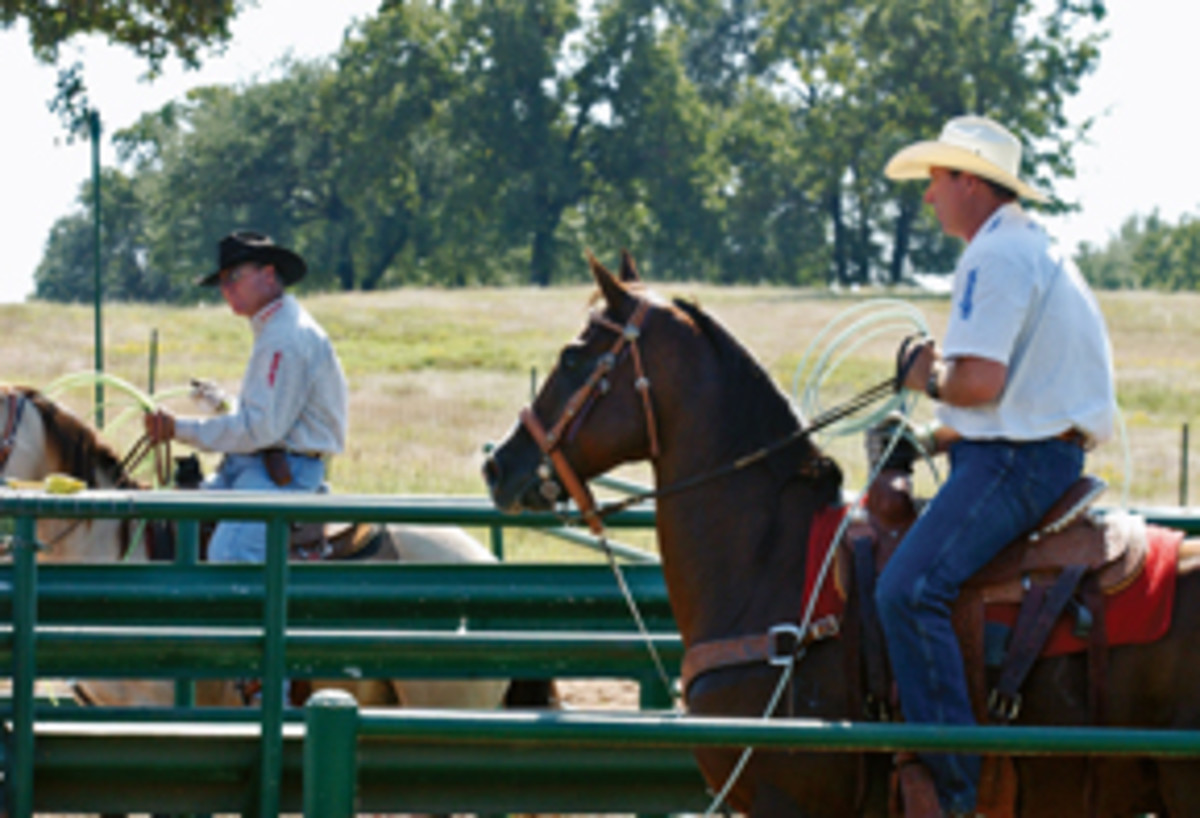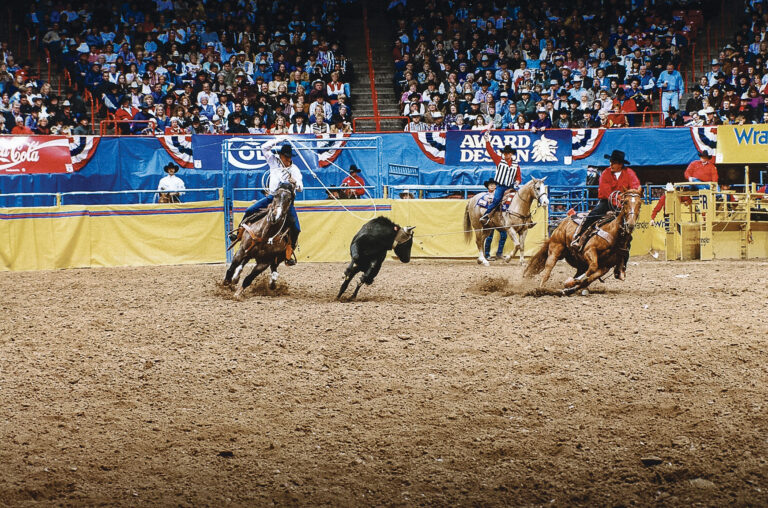
You need to go over your equipment at least once a month, not only as a safety precaution, but because it’s good business, too. There are so many things that can go wrong if you don’t maintain all your gear, and you don’t want to wait for that to happen. If you’re at a big roping and the Chicago screw comes out of your bridle, or your hobble strap breaks between your cinches, you can have a wreck on your hands. Not only that, but you’ll blow what might have been a good opportunity to capitalize because of poor management. These mechanical breakdowns really do happen. Charmayne James lost her bridle once at the National Finals. She happened to be riding Scamper, and actually won the round. But if that’d happened on most horses it could have been pretty scary. I was high team at a roping in Reno last year, my hobble strap broke between my cinches, and my horse started humping up running down the arena. It always seems to happen at the worst possible time. I was at the rodeo in Cloverdale the other day, I went to pay my fees, came back and my horse was walking off because the Chicago screw had come out of my bridle. It could just as easily have fallen off during that next run.

So many breakdowns can be avoided simply by checking your equipment on a regular basis, or even using equipment that doesn’t even use things like Chicago screws. If you do use Chicago screws, you can put Super Glue or nail polish in there to help keep them tight. That helps, but you still need to check them on a regular basis, because they can break loose.

Rewrapping your saddle horn is a good idea, too, whether you’re practicing or competing. You never know when your steer’s going to drag or you’re going to take a hard jerk. If you don’t have enough rubber on the horn, your rope’s going to slide and can cause a bad handle for your heeler. If you don’t have enough rubber at the bottom of your horn, your rope’s going to slide and it’ll eventually burn all the leather off and your horn cap will end up turning. The safety factor of a running rope goes without saying.
I like to change my cinches a couple times a year, because a lot of times they’ll rot from the sweat. I do it as preventive maintenance to avoid a busted cinch, which is a real wreck. Check the d-rings on your cinch where the tiedown hooks to it also. In the bulldogging slack at Oakdale this year, the cinch or latigo on Luke Branquinho’s bulldogging horse broke when he was coming out of the box and he had to bail off. That could have been a really bad deal if he’d started to get down on that steer. He could easily have ended up underneath his horse.

If your horse has been working great, then suddenly picks up some sort of quirk-anything out of the ordinary-go through an equipment check on your saddle. Make sure you don’t have a broken tree that’s hurting your horse’s back and causing him not to want to pull, or to lunge when you’re logging steers.

If your horse goes to slinging his head when you take ahold of him, you might try getting your horse’s teeth checked. Or you might check your bridle to see if it’s broken down or maybe even too much for him. Sometimes a horse will shake his head to try to get away from the pain that can be caused by a bridle that doesn’t fit your horse. Paying attention to your equipment just makes sense. It keeps you safer and will help you be more successful.










